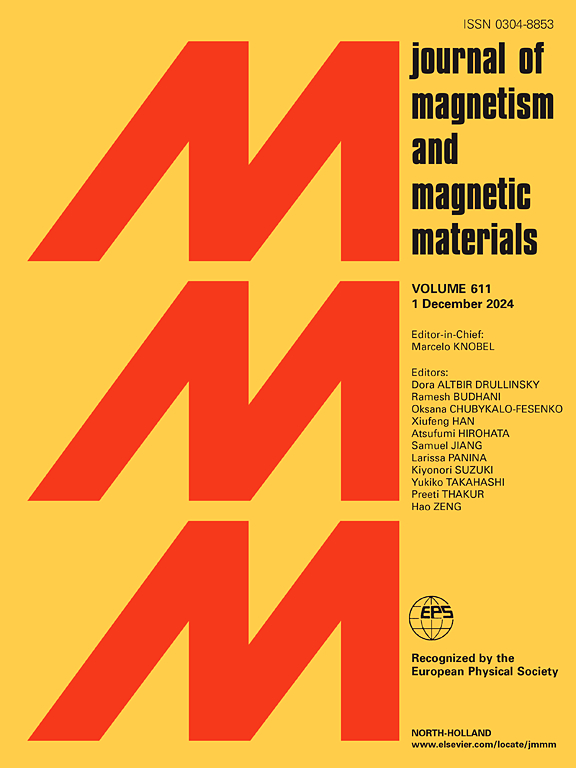Kinetic superexchange in a pair of pseudo-Jahn-Teller magnetic ions: Ferro- vs antiferromagnetic coupling
IF 2.5
3区 材料科学
Q3 MATERIALS SCIENCE, MULTIDISCIPLINARY
引用次数: 0
Abstract
The main focus of this paper is to reveal the influence of the pseudo-Jahn-Teller effect (PJTE) on the exchange interaction in a pair of magnetic ions having a degenerate or pseudo-degenerate ground state. We consider the combined effect of the Anderson’s type kinetic exchange (that is called superexchange) between the two one-electron centers each having two nearly-degenerate low-lying magnetic orbitals mixed by the vibration of a suitable symmetry. The superexchange is assumed to be comparable with the energy gap between the two orbitals. Under such condition the electronic energy spectrum of the dimer is shown to consist of three superimposed pairs of S = 1 and S = 0 levels, with the order of the levels inside each group obeying Goodenough-Kanamori rules. The overall effect of superexchange is antiferromagnetic if the energy gap between the two orbitals is large as compared with the superexchange and it is ferromagnetic otherwise. The PJT effect proves to be spin-dependent that drastically modifies the energy pattern arising from the superexchange. The most spectacular effect of the vibronic coupling is the predicted possibility of changing spin of the dimer. In all cases strong PJT coupling stabilizes an antiferromagnetic ground state. We demonstrate that depending on the electronic parameters involved, one of the two types of minima proves to be the global one. One of these types describes ferrodistortive antiferromagnetic state, while for other one the system proves to be ferromagnetic and antiferrodistortive. In a broader context, these results show that a dimeric PJT cluster can serve as a molecular model for interconnected cooperative phenomena in PJT crystals such as magnetic, structural and orbital types of ordering.

求助全文
约1分钟内获得全文
求助全文
来源期刊

Journal of Magnetism and Magnetic Materials
物理-材料科学:综合
CiteScore
5.30
自引率
11.10%
发文量
1149
审稿时长
59 days
期刊介绍:
The Journal of Magnetism and Magnetic Materials provides an important forum for the disclosure and discussion of original contributions covering the whole spectrum of topics, from basic magnetism to the technology and applications of magnetic materials. The journal encourages greater interaction between the basic and applied sub-disciplines of magnetism with comprehensive review articles, in addition to full-length contributions. In addition, other categories of contributions are welcome, including Critical Focused issues, Current Perspectives and Outreach to the General Public.
Main Categories:
Full-length articles:
Technically original research documents that report results of value to the communities that comprise the journal audience. The link between chemical, structural and microstructural properties on the one hand and magnetic properties on the other hand are encouraged.
In addition to general topics covering all areas of magnetism and magnetic materials, the full-length articles also include three sub-sections, focusing on Nanomagnetism, Spintronics and Applications.
The sub-section on Nanomagnetism contains articles on magnetic nanoparticles, nanowires, thin films, 2D materials and other nanoscale magnetic materials and their applications.
The sub-section on Spintronics contains articles on magnetoresistance, magnetoimpedance, magneto-optical phenomena, Micro-Electro-Mechanical Systems (MEMS), and other topics related to spin current control and magneto-transport phenomena. The sub-section on Applications display papers that focus on applications of magnetic materials. The applications need to show a connection to magnetism.
Review articles:
Review articles organize, clarify, and summarize existing major works in the areas covered by the Journal and provide comprehensive citations to the full spectrum of relevant literature.
 求助内容:
求助内容: 应助结果提醒方式:
应助结果提醒方式:


